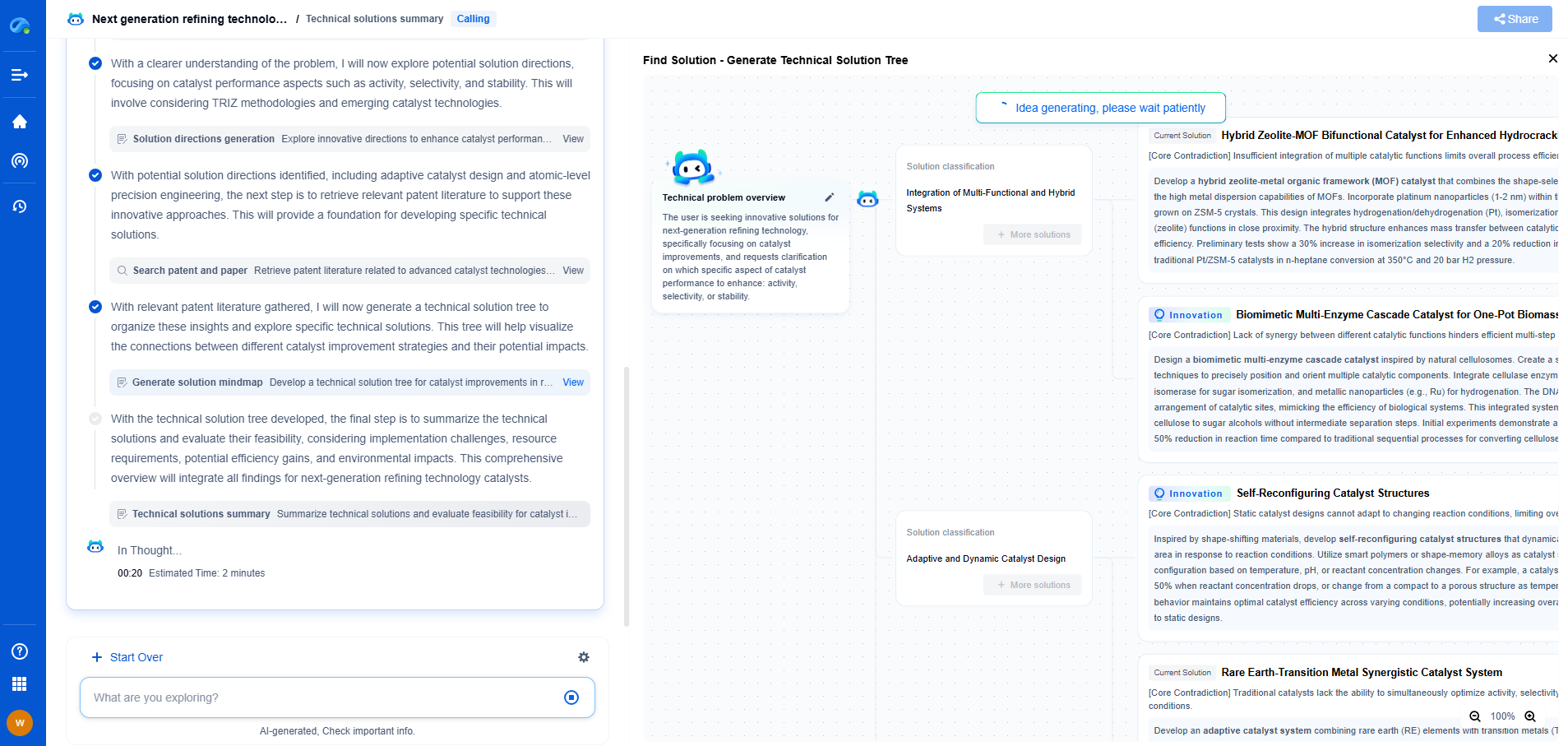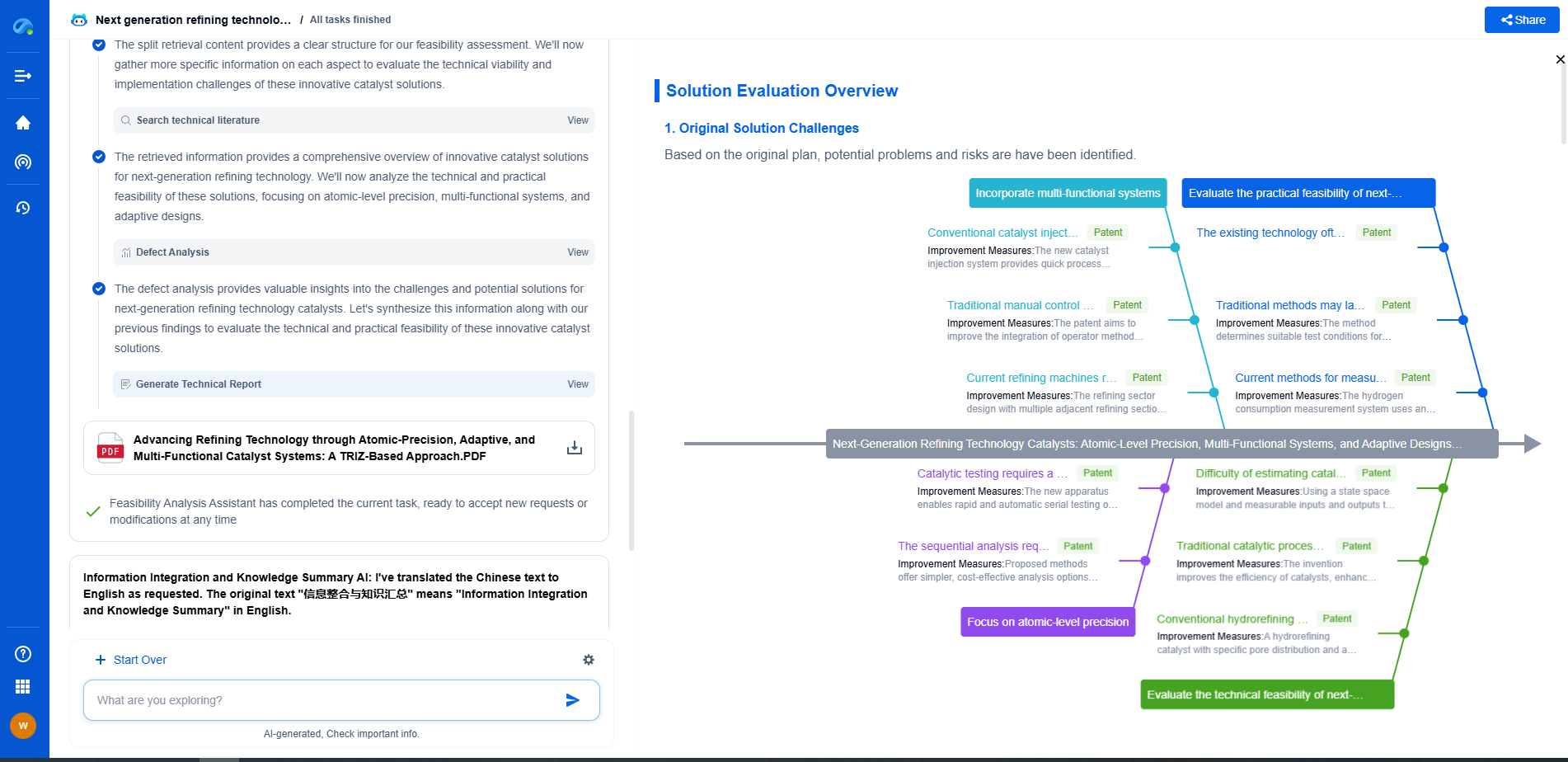The Role of Sensor Nodes in Oil & Gas Pipeline Monitoring
JUL 2, 2025 |
In the oil and gas industry, pipeline infrastructure plays a critical role in transporting energy resources from extraction sites to processing facilities and ultimately to consumers. Monitoring these pipelines is crucial for ensuring safety, efficiency, and environmental protection. With advancements in technology, sensor nodes have become integral to modern pipeline monitoring systems. These sensor nodes provide real-time data, enhance early detection of potential issues, and improve overall pipeline management.
The Importance of Pipeline Monitoring
Pipelines, often stretching over vast distances, are susceptible to various challenges including corrosion, leaks, and external damage. Traditional monitoring methods often involve manual inspections, which can be time-consuming, costly, and potentially dangerous. Effective pipeline monitoring systems are essential to minimize environmental impact, prevent disruptions in supply, and ensure compliance with safety regulations. Sensor nodes offer a technological solution to overcome the limitations of traditional monitoring methods.
Understanding Sensor Nodes
Sensor nodes, or wireless sensor networks (WSNs), are small, autonomous devices equipped with sensors to monitor and communicate data regarding various environmental and structural parameters. In the context of oil and gas pipelines, these nodes are designed to detect changes in pressure, temperature, flow rate, and chemical composition. By collecting and transmitting data wirelessly, they provide a more comprehensive and real-time overview of pipeline conditions.
Applications of Sensor Nodes in Pipeline Monitoring
1. Leak Detection:
One primary function of sensor nodes is to detect leaks promptly. By continuously monitoring pressure levels and flow rates, these sensors can identify anomalies that may indicate a leak. Early detection is vital for preventing environmental damage and reducing economic losses associated with product loss and repair costs.
2. Corrosion Monitoring:
Corrosion is a significant concern for pipeline integrity. Sensor nodes can be equipped with sensors to measure pH levels, humidity, and other factors that contribute to corrosion. By analyzing this data, maintenance teams can predict potential corrosion sites and take preventive measures before significant damage occurs.
3. Structural Health Monitoring:
In addition to detecting leaks and corrosion, sensor nodes can monitor the structural health of pipelines. Vibration sensors, strain gauges, and acoustic sensors help assess the overall condition of the pipeline. This information is crucial for planning maintenance and ensuring the longevity of the infrastructure.
4. Environmental Monitoring:
Sensor nodes can also monitor environmental conditions surrounding the pipeline, such as soil moisture and temperature. This data is essential for assessing external factors that may affect pipeline stability and for making informed decisions regarding maintenance and repair.
Challenges and Considerations
While sensor nodes offer numerous benefits, their implementation in pipeline monitoring is not without challenges. One significant challenge is ensuring reliable communication between nodes, especially in remote or underground locations. Power supply and energy management are also critical concerns, as sensor nodes need to operate efficiently for extended periods.
Additionally, data security and privacy are paramount. As sensor nodes collect and transmit sensitive information, safeguarding this data from cyber threats is crucial to preventing unauthorized access and potential sabotage.
Future Trends and Innovations
The future of sensor nodes in pipeline monitoring looks promising, with ongoing research and development aimed at overcoming existing challenges. Innovations such as energy harvesting technologies are being explored to extend the operational lifespan of sensor nodes. Furthermore, advancements in artificial intelligence and machine learning are enhancing data analysis capabilities, allowing for more accurate predictions and proactive maintenance strategies.
Conclusion
Sensor nodes are revolutionizing the way oil and gas pipelines are monitored, offering enhanced accuracy, efficiency, and reliability. By providing real-time data on pipeline conditions, these technologies enable prompt detection of issues, reducing the risk of environmental harm and financial losses. As research and development continue, sensor nodes are expected to become even more integral to pipeline monitoring systems, contributing to a safer and more sustainable energy industry.
Ready to Reinvent How You Work on Control Systems?
Designing, analyzing, and optimizing control systems involves complex decision-making, from selecting the right sensor configurations to ensuring robust fault tolerance and interoperability. If you’re spending countless hours digging through documentation, standards, patents, or simulation results — it's time for a smarter way to work.
Patsnap Eureka is your intelligent AI Agent, purpose-built for R&D and IP professionals in high-tech industries. Whether you're developing next-gen motion controllers, debugging signal integrity issues, or navigating complex regulatory and patent landscapes in industrial automation, Eureka helps you cut through technical noise and surface the insights that matter—faster.
👉 Experience Patsnap Eureka today — Power up your Control Systems innovation with AI intelligence built for engineers and IP minds.
- R&D
- Intellectual Property
- Life Sciences
- Materials
- Tech Scout
- Unparalleled Data Quality
- Higher Quality Content
- 60% Fewer Hallucinations
Browse by: Latest US Patents, China's latest patents, Technical Efficacy Thesaurus, Application Domain, Technology Topic, Popular Technical Reports.
© 2025 PatSnap. All rights reserved.Legal|Privacy policy|Modern Slavery Act Transparency Statement|Sitemap|About US| Contact US: help@patsnap.com

